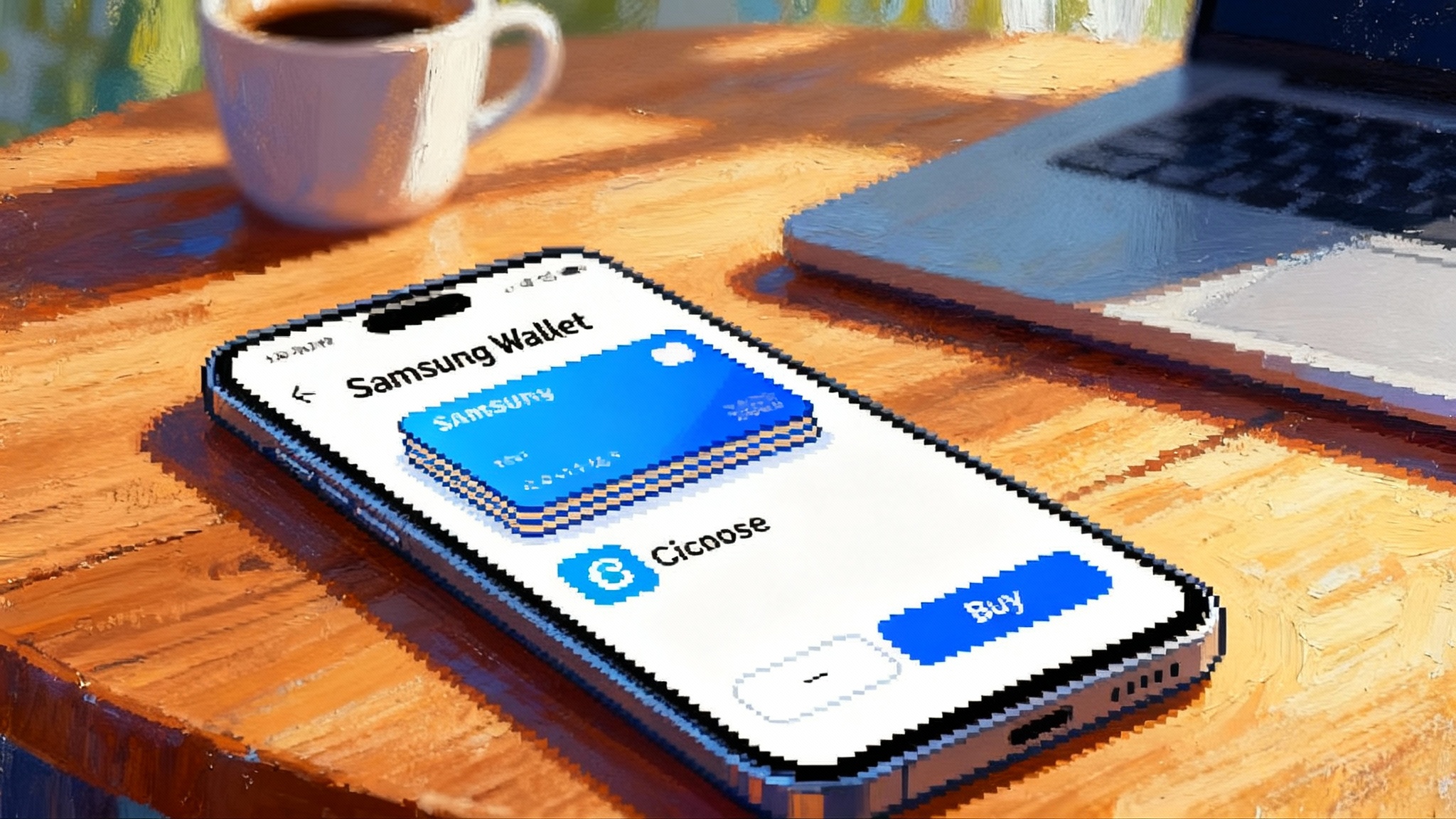Monad's Oct 14 airdrop opens as a fast EVM L1 pressures L2s
Monad will open its airdrop claims portal on October 14, 2025, spotlighting a parallel EVM and near‑instant confirmations that could reset Layer 2 fee dynamics and MEV flows. Here is what builders and users should watch over the next 30 to 90 days.

Breaking: a claims portal, and a message to the market
Monad says its airdrop claims portal will open on Tuesday, October 14, 2025. The announcement did not include token distribution specifics, but it is a strong signal that the network is entering the last stretch before mainnet. Several trading venues already list perps that reference the token, a familiar pre‑launch tell. The date matters because it sets a clock for integrations and audits, and it invites a fresh question for crypto’s operating system today: what happens to Layer 2 economics and maximal extractable value when a fast, parallelized, Ethereum‑compatible Layer 1 shows up. Bankless on October 14 claims.
This piece looks forward from the claims portal to the next 30 to 90 days. We map how Monad’s parallelized Ethereum Virtual Machine and quick confirmations could pressure the fee and MEV supply chains that power rollups today. Then we give a checklist for builders and users, and we end with a framework for the bigger question: can a performant Layer 1 reset the appchain versus superchain trade‑off without reliving 2021’s mistakes.
Why Monad’s design is different in practice
If Ethereum is a single cashier ringing up items one by one, Monad tries to open many checkout lanes at once while still producing the same end‑of‑day ledger. The trick is optimistic parallel execution. Transactions start in parallel and each execution produces a record of the storage slots it read and wrote. The system then commits results in the original order. If a later transaction touched data that an earlier transaction changed, the later one is re‑run with the updated inputs. This keeps outcomes byte‑for‑byte compatible with Ethereum while using more of the underlying hardware.
Monad also separates the act of agreeing on the order of transactions from the act of executing them. Consensus finalizes the official ordering quickly, and execution catches up just after. For users that means a short path from click to confirmation and fewer edge cases where reordering undermines strategies that depend on timing. For builders it means more predictable throughput and a bigger gas budget per block. If you want a technical tour, read How Monad Works.
Two practical implications matter for economics:
- Finality feels fast. With single slot finality targets and very short block intervals, order is fixed quickly and most full nodes can observe outcomes shortly after. That compresses the window in which adversaries can profit from short reorgs, and it reduces the need to charge users a premium for faster assurance in volatile moments.
- State access is engineered, not inherited. A custom state backend that focuses on Merkle data and asynchronous input and output is designed to reduce the number of disk reads that constrain execution. That is an enabler for the parallel approach, not just a nice‑to‑have.
For broader context on data availability and throughput pressure, see our look at PeerDAS and the blob market, and for comparisons to other high‑performance chains, our analysis of Firedancer and bigger block design.
Pressure on Layer 2 fee and MEV supply chains
Rollups earn money from two places. First, the sequencer margin, which is the spread between what users pay to include a transaction and what the rollup pays to post data to a base layer. Second, the MEV flow that can be captured or shared along a builder supply chain. A high performance Layer 1 with quick confirmations and low fees changes both sides of that ledger.
- Sequencer margins face a new benchmark. If Monad sustains low end‑user fees at scale, and if settlement assurances are close to instant for most use cases, a share of users and apps will prefer to live on a single domain rather than paying a rollup premium. That does not kill rollups, but it does reset the price that a rollup can charge for convenience, alignment, and optionality.
- MEV is reshaped by latency and ordering policy. When order is decided quickly and the cost of getting into the canonical block is low, some cross‑domain arbitrage and latency‑sensitive search profits compress. The center of gravity shifts to on‑domain liquidity quality, builder competition for order flow, and protocol rules around auctions and refunds. For policy debates on builders and auctions, see builder auctions and ePBS debates.
For rollup teams, the response is to double down on advantages that are not pure throughput. Think compliance contour, enterprise integrations, region‑specific payment rails, or programmatic revenue shares with apps. Expect more rollups to experiment with shared sequencing, inter‑rollup preconfirmations, and cross‑domain intents that reduce user‑visible settlement risk.
The next 30 to 90 days: what to watch, and what to do
Below is a condensed checklist organized by the pieces that most influence builder roadmaps and user safety.
1) Sequencer and leader design
- What to watch: Does Monad’s leader set publish a clear ordering policy and any plan for proposer and builder separation. Is priority gas auction the default, or will there be auctions and bundles. Are there visible guardrails against tail‑forking behavior and related incentive games. Does the client expose signals for speculative versus hard finality so frontends can communicate the right assurance level.
- Why it matters: Ordering rules determine who profits from flow and how much latency matters. They also set the tone for fairness claims and builder competition.
- Action for builders: Decide early how your app will source order flow. If you plan to rely on private order flow or auctions, write neutral adapters and test a fallback path through the public mempool. If you need atomicity across liquidity pools, design for re‑execution awareness and simulate hot‑state contention to see how often you hit the expensive path.
2) Bridge readiness and custody posture
- What to watch: Which bridges will be available at launch and which ones have public audits with recent dates. Is there a canonical bridge backed by the foundation. Are third party bridges using light client verification, multisig committees, or optimistic proofs. What are the escape hatches and pause levers.
- Why it matters: In 2021 and 2022, most of the large losses came from rushed bridges and fragile guardians. A performant execution layer does not help you if the weakest link is the gateway.
- Action for builders: Pick a default bridge and one contingency. Document the risk model in your app. Use rate limits for initial deposits and withdrawals. Add a simple circuit breaker that halts cross‑chain settlement if an oracle or consensus signal diverges from expected ranges.
3) First DeFi primitives
- What to watch: The initial block builders of a new economy are the basic pieces of market structure. Expect an early automated market maker, a money market, a liquid staking token, routing and aggregation, and at least one orderbook venue. Watch whether stablecoin liquidity is native or bridged, and whether redemptions settle without bottlenecks.
- Why it matters: The depth, inventory management, and failure behavior of these primitives determine whether a fast chain actually feels liquid, or whether it only looks fast in synthetic benchmarks.
- Action for builders: If you are not part of those primitives, integrate them as dependencies in sandboxes first. Run stress tests on quote staleness thresholds and oracle update latency. If you are shipping a primitive, cap liquidity during the first week and schedule a staged liquidity increase with on‑chain metrics gates.
4) Wallet experience and safety rails
- What to watch: Which wallets offer a one‑click network add, clear chain identification, human readable warnings for speculative finality, and simulation that reflects parallel execution and re‑execution semantics. Are hardware wallets supported on day one. Are explorers accurate on pending versus committed status.
- Why it matters: Most security incidents start at the wallet or the browser. Front line clarity reduces support load and prevents permanent loss.
- Action for builders: Ship chain detection and safety copy now. Treat chain ID and explorer URLs as allow‑lists. Consider bundling a transaction simulation step that shows both the optimistic and committed view for edge cases. If you support multisig, test threshold signing in short finality conditions.
5) Incentives and emissions
- What to watch: Does the foundation or ecosystem publish transparent incentives for liquidity, builders, and validators. Are emissions back‑weighted to avoid a week one rush and week three decay. Are rewards tied to objective contribution, not vanity metrics.
- Why it matters: The wrong curve attracts mercenary capital and leaves a liquidity cliff. The right curve lets fundamentals catch up to attention.
- Action for builders: If you plan to use incentives, tie them to reliability and useful volume. For example, weight rewards by filled orders that clear within a tight price band, or by lending utilization that stays within safe health factors. For users, treat overly generous multipliers as a red flag and size positions accordingly.
How this could reset rollup math
Monolithic skepticism in 2023 gave way to rollup supremacy in 2024. Today’s frontier lives somewhere in between. A performant Layer 1 that stays Ethereum‑compatible challenges the default assumption that every app should be its own chain. Here is a grounded way to think about the choice.
- If your app’s edge is latency or tight composability across many contracts, a fast Layer 1 can remove the need to coordinate across sequencers. Simple example: an intent‑driven marketplace that needs many contracts to settle in a very short window benefits from quick finality without cross‑domain bridges.
- If your app’s edge is policy control, regional alignment, or data availability customization, a rollup remains attractive. You can own the sequencer policy, shape fee markets, and choose a data layer that matches your users.
- If you need both, expect hybrid strategies. Deploy a primary on the Layer 1 and mirror a thin router on a rollup, or vice versa. Use intents and shared builders to minimize the penalty of crossing domains.
The economic lever in all cases is the relative cost of block space. If Monad’s cost per useful computation is materially lower while it keeps execution semantics aligned with Ethereum, more teams will launch on the Layer 1 and let the network’s throughput and quick confirmations do the heavy lifting. That puts gentle pressure on rollups to either differentiate clearly or trim margins.
MEV in a network that confirms quickly
MEV is not a single thing. It is a bundle of strategies with different dependencies. Some rely on reorg risk, some on exclusive order flow, some on auction rules, and many on retail slippage. A network that fixes order quickly and keeps fees low moves value away from reorg‑dependent games and toward builder competition for high quality order flow, search quality inside the block, and liquidity management. The policy choice to watch is how leaders and builders can express preferences. The simplest default is a priority gas auction, but many ecosystems evolve toward more structured auctions that include bundles, refunds, or protections for retail. Quick confirmations help, but policy still decides where the surplus goes.
For builders, the practical move is to assume lower latency spreads and design for inventory and routing edge, not for timing edge. For users, the signal to watch is whether a share of MEV is burned, rebated, or paid to stakers. That tells you how sustainable yields might.
Lessons from 2021, applied now
The last cycle taught three hard lessons.
- Bridges and guardians are where the money leaks. Do not bridge size without audited code, a clear operations plan, and tested pause levers.
- Tokenomics that promise a lifetime of rewards in month one are a trap. Front load attention, not emissions. Shift rewards to durability, not raw clicks and mints.
- Dashboards can lie in the short run. Favor time‑weighted depth and spreads, not just headline total value locked.
Translate those into actions. Cap protocol spend and raise limits with on‑chain health checks. Use bug bounties sized for the value at risk. Require two independent oracle sources before you accept collateral. Publish a public incident runbook so users know exactly what you will do when something breaks.
A 30 day builder playbook
- Week 1: Ship test deployments under mainnet‑like parameters. Profile gas with Monad’s opcode repricing in mind. Measure how often your hot paths trigger re‑execution under load. Add alerts on state contention.
- Week 2: Integrate your chosen bridge and one contingency. Set tight deposit and withdraw limits. Simulate halted bridge liveness for 24 hours and make sure your app degrades gracefully.
- Week 3: Wire a basic builder interface. Even if you start with public mempool only, write to an abstraction so you can add private order flow later without refactoring.
- Week 4: Run an incentives dry run with play money. Stress test the on‑chain claims process, withdrawal queues, and treasury spends. Publish open dashboards that track slippage, spreads, and settlement integrity.
A 30 day user checklist
- Prepare the basics: add the testnet and then the mainnet network when it appears in your wallet via a verified prompt. Bookmark the official explorer and faucet pages. Use a fresh wallet with a hardware signer.
- Claim safely: wait for the official claim portal link from the project’s verified channels. Avoid third party checkers. Do not type your seed phrase anywhere. Set spending caps and revoke approvals after use.
- Start small: bridge small amounts first and verify on both explorers. If stablecoins are bridged wrappers, learn the redemption path and the counterparty.
The telltales of real traction
If you want a simple dashboard to judge whether this launch is a rerun of 2021 or a step forward, track five things for the first month.
- Active users per day that return after a week. That measures stickiness, not just curiosity.
- Time‑weighted stablecoin depth in the top pairs. That measures payment‑grade liquidity, not just vanity pools.
- Median round‑trip settlement times that include bridges. That measures actual user experience, not just within‑domain speed.
- Share of MEV that is burned or rebated. That measures who benefits from builder competition.
- Number of incidents with public postmortems. That measures operational maturity.
The bottom line
The claims portal opening on October 14, 2025 is more than a token event. It is a live test of an idea that has been argued for years: that a single, very fast, Ethereum‑compatible Layer 1 can satisfy most of the market most of the time. If Monad turns the theory into reliable practice, rollups will still matter, but they will have to earn their keep by solving problems that a high performance base layer does not solve by default. For builders and users, the opportunity is to treat the next 90 days as an engineering window, not a carnival. Set your metrics now, wire your safety rails, and decide where your edge will come from in a world where speed is no longer scarce.








